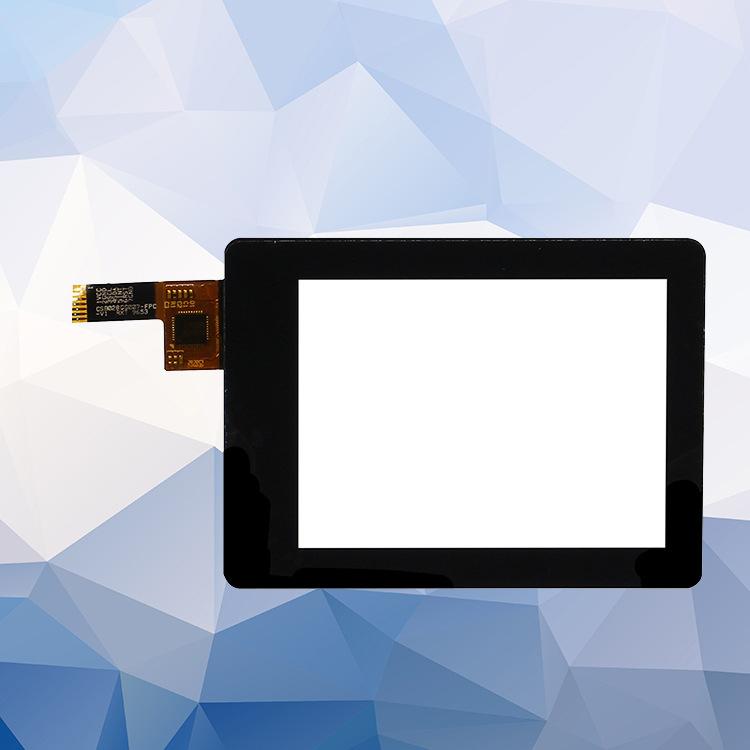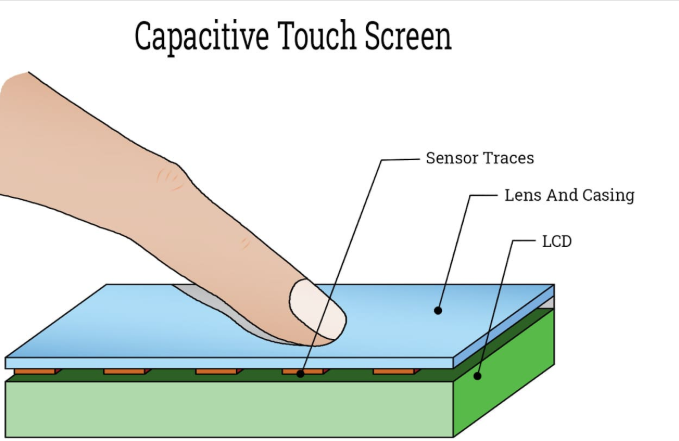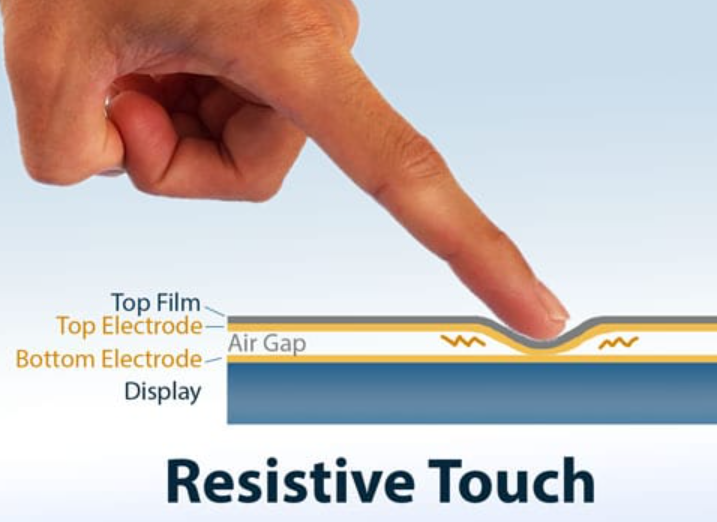
When you swipe your finger across the screen of your mobile phone to unlock it, or press the payment terminal with your gloved hand at the supermarket checkout counter, you may not realize that these two seemingly identical "touch" actions are based on completely different technical principles. Capacitive touch screens and resistive touch screens are like two "interaction messengers" with clear division of labor, playing different roles in our lives. Today, let's peel off the mysterious veil of the screen and see how these two technologies allow our fingertips to communicate with the digital world.

Imagine that the surface of your phone screen is like an invisible electric field "barrier". The core of a capacitive touch screen is a thin layer of conductive material (usually indium tin oxide, or ITO), which forms a uniform electrostatic field on the surface of the screen. When your finger touches the screen, the human body, as a conductor, will slightly change the electric field distribution at the touch point, just like throwing a stone into a calm water surface to create ripples. The controller below the screen can accurately detect this change and calculate the touch location.

Even more amazing is the "projected capacitive technology" used in modern smartphones. It is like laying an invisible "grid map" under the screen, composed of a criss-crossing array of electrodes. When multiple fingers touch the screen at the same time, each contact point will produce a unique capacitance change in the grid, and the controller can quickly calculate the position of each finger like solving a math problem. This is why we can achieve operations such as "multi-finger zoom" and "two-finger rotation" on mobile phones. The book "Introduction to Touch Interaction Technology" once made this analogy: "The capacitive screen is like a sensitive electric field musician, which can sense every 'note' change brought by the fingertips."
Unlike the "electromagnetic induction" of capacitive screens, the working principle of resistive touch screens is more like a "physical switch". Its screen is composed of two thin layers of resistive film, separated by a layer of insulating particles as fine as sesame seeds. When you press the screen with your finger or other objects, the two layers of resistive film will touch under pressure, just like pressing an invisible button. At this time, the circuit is turned on, and the controller determines the touch position by detecting the change in resistance value.

The "simple and direct" nature of this technology is particularly common in early touch screens. For example, in an old-fashioned car GPS navigator, when you press the screen with your fingertips to select a destination, you are actually "pressing" an invisible button. "A Brief History of the Development of Human-Computer Interaction" mentions that the inspiration for the invention of the resistive screen came from the keys of a calculator. It extends the "press-response" logic from physical keys to transparent screens, and is the "first generation contributor" to touch screen technology.
If you use a smartphone or tablet every day, you are probably dealing with a capacitive screen. The biggest advantages of this type of screen are "high definition" and "smooth interaction". Because the structure of the capacitive screen is simpler and the light transmittance can reach more than 90%, the screen can present a bright and delicate picture quality, just like looking at the scenery through a clean piece of glass. When you swipe through photos and play touch games on your phone, the multi-touch capability of the capacitive screen can accurately capture the movement of each finger, bringing a smooth experience of "point and shoot".

However, capacitive screens also have a "little temper": they only recognize conductive objects, such as fingers or special conductive pens. If you wear thick winter gloves or want to operate with an ordinary pen tip, the capacitive screen may be "indifferent". In addition, in a humid environment (such as touching the screen just after washing your hands), water droplets may interfere with the electric field, causing the screen to "accidentally touch" and jump randomly. But in a clean and dry environment such as home and office, capacitive screens are undoubtedly the "king of experience", which is why almost all of our commonly used mobile phones and tablets use capacitive technology.
When you walk into a factory floor, hospital operating room, or use certain devices outdoors, you may encounter resistive touch screens. These screens are like "rugged" outdoor explorers, and they work well in places where capacitive screens are not suitable. The surface of the resistive screen is usually a layer of elastic PET film, which can still work normally even if it is scratched, stained with oil, or even rained on a rainy day. The "Industrial Touch Device Selection Guide" specifically mentions that the resistive screen can be directly wiped and disinfected with alcohol, which is particularly important in hospital environments that require high-frequency cleaning.

What's more amazing is that the resistive screen has almost no requirements for the "touch object" - whether it is a hand wearing thick gloves, a fingertip covered with oil, or an ordinary pen, as long as pressure is applied, it can be operated. For example, in cold chain logistics, workers wearing antifreeze gloves can easily click on the resistive screen to enter cargo information; on equipment on construction sites, the resistive screen is not afraid of dust and vibration and always works stably. However, the "shortcomings" of the resistive screen are also obvious: due to the influence of the multi-layer structure, its display effect is dim, the transmittance is only 60%-70%, and most of them can only support single-point touch, and cannot play "multi-finger games" like capacitive screens.
· Smartphones/tablets : Relying on multi-touch and high-definition display, capacitive screens are the only choice. Typing, playing mobile games, and zooming in and out on your phone are all "specialties" of capacitive screens.
· Smart home devices : such as the touch panel of a smart refrigerator and the remote control of a smart TV. The smooth interaction of the capacitive screen can enhance the user experience.
· Commercial display equipment : touch screen kiosks in shopping malls, electronic menus in restaurants, the high-quality images on capacitive screens can attract customers' attention.
· Industrial control equipment : machine operation panels in factories, display screens of CNC machine tools, the durability and anti-interference capabilities of resistive screens are indispensable.
· Medical equipment : handheld detectors in hospitals, bedside control panels in wards, resistive screens can be operated with gloves and are easy to disinfect.
· Vehicle-mounted and outdoor equipment : Some vehicle-mounted GPS and outdoor handheld navigation devices have resistive screens that can still be seen clearly under direct sunlight and are not affected by rain.
· Capacitive screen care : Wipe gently with a microfiber cloth, avoid using alcohol-based cleaners (which may damage the anti-fingerprint coating), and do not allow the screen to be exposed to moisture or oil for a long time.
· Resistive screen maintenance : You can disinfect it directly with alcohol cotton pads, but avoid scratching the surface PET film with sharp objects, and clean the dust in the gaps regularly.
Capacitive screen and resistive screen are like two different "keys" that open different doors to the digital world. Capacitive screen uses the high-tech "electric field induction" to bring us a smooth and gorgeous interactive experience; resistive screen uses the durable "pressure conduction" to stick to its post in harsh environments. Next time you touch the screen, you might as well guess which technology it is - perhaps you will find that behind these seemingly ordinary "touches", there is such exquisite technical wisdom, and their existence is to make our lives more convenient and efficient.
Not sure which touchscreen is right for your industry? Contact our team today for a customized recommendation and sample evaluation!
Name: lily
Mobile:185 7332 9919
Tel:185 7332 9919
Whatsapp:8618573329919
Email:sales@huayuan-lcd.com
Add:Factory No.9, Zhongnan High-tech Intelligent Manufacturing Industrial Park, Tianyuan District, Zhuzhou,Hunan, China, 412000